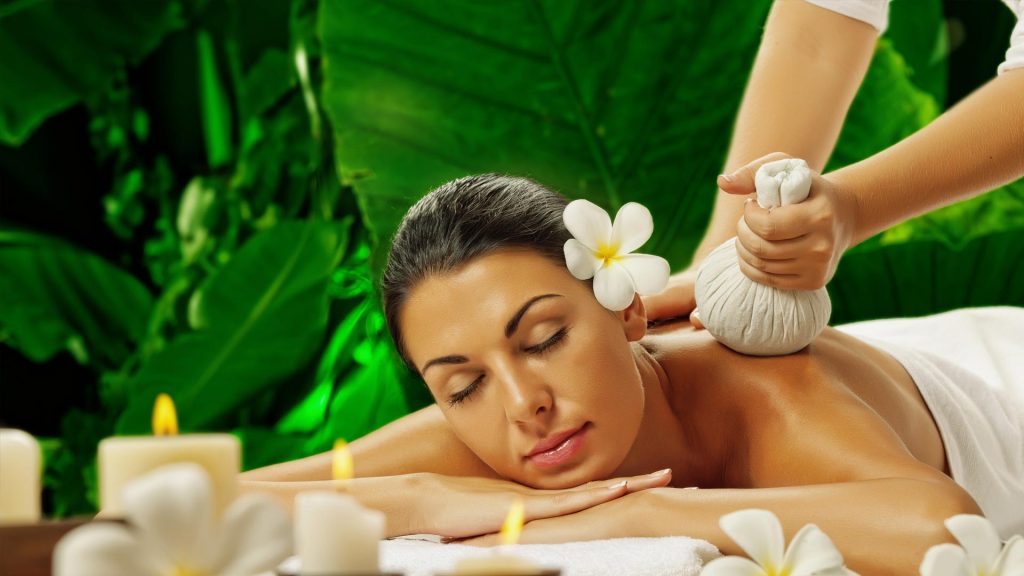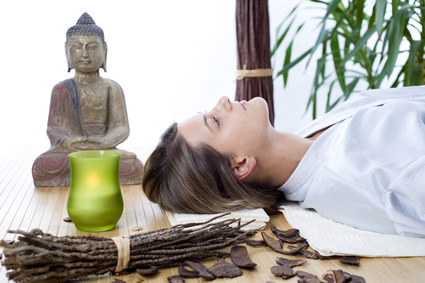
by Kevin Lee
Many of us may want to lead healthier lifestyles by spending time and money on buying organic fruits and vegetables and cooking grass-fed meats. Some of us may use air filters to clean the air in our homes, or filters to clean and purify our drinking water. But how much good does this do if we are adding toxins to our bodies with our cosmetics, shampoos and soaps?
Biologists claim that our skin can absorb up to 60% of whatever is applied to its surface. It may surprise many people when they learn their favorite shampoo, hair conditioner or body lotion contains potentially toxic chemicals that should never be applied to the skin.
Beware of Potentially Dangerous Ingredients in Skin Care Products
Almost all shampoos contain a surfactant called sodium lauryl sulfate (SLS).It helps add the foam and suds to the lather. However, SLS are very harsh detergents which can strip your skin’s moisture barrier, which can disrupt your skin’s health. They’ve been reported to cause eye irritation, hair loss, skin rashes, dandruff and even allergic reactions. Sodium lauryl sulfates also produce nitrosamines, a potent carcinogen which has been linked to cancer, neurotoxicity, and endocrine disruption.
Artificial preservatives like parabens are used in many skin care and cosmetic products to prevent the growth of bacteria and fungi. Unfortunately, some parabens have been shown to mimic estrogenic activity in our cells which may disrupt the fragile hormonal balance; this may increase the risk for breast cancer and other forms of cancer.
Petroleum, and petroleum by-products such as mineral oil, is frequently used in skin care lotions because they are very inexpensive moisturizers. They are considered ‘occlusive agents’ and work by sealing in moisture on top of your skin.
The problem is this action may prevent moisture from escaping and could lead to blocked skin pores. Petroleum products may also give you a false sense of skin hydration and moisturizing because they could prevent the action of your skin’s natural fats to act as a moisture barrier. Petroleum happens to be banned for use in skin care products in many European countries.
Another dangerous chemical, bispenol A (BPA), has been banned from cosmetics since 2006, yet it is still used in the packaging for these products where it can migrate back into the cosmetic products.
Artificial Colors and Fragrances can pose another health risk. Many skin care products may come heavenly scented due to the addition of perfumes and fragrances. These unique fragrances are usually developed by mixing hundreds of different aromatic hydrocarbons which are usually derived from petroleum. Some fragrances and colors have not even been assessed for safety and may cause allergic reactions in some individuals.
These are just some examples of how we underestimate our exposure to these dangerous, carcinogenic and hormone-disrupting chemicals. Aside from skin and body exposure, it’s reported that women can ingest up to an average of one pound of lipstick a year. This fact alone is enough to give us pause when we look at the exposure to man-made chemicals in cosmetics and body care products.
But there is good news! Most of the cosmetic, hair and skin-care products that we use every day can be purchased or made in more natural, non-toxic or even health-promoting forms. Read on to learn more.
 How You Can Use Inexpensive Natural Skin Care at Home for Healthier Skin
How You Can Use Inexpensive Natural Skin Care at Home for Healthier Skin
Mother Nature provides a bounty of choices for simply, yet effective, skin and hair care. Many of these ingredients have been proven to be effective alternatives to man-made, synthetic products with the added benefit of providing essential nutrients to your body.
And the best part is, you can buy many of these ingredients an easy, do-it-yourself, at-home skin care
Try Shea Butter for Softer, Smoother Skin
Shea butter (also known as Butyrospermum Parkii) is a slightly yellowish or ivory colored vegetable fat extracted from the nut of the African shea tree. Shea butter is made up of saturated and unsaturated fatty acids (stearic and oleic acid) and is also an excellent source of Carotene, Vitamins A, E and F.
Shea butter makes an excellent skin emollient and had been reported to protect and heal skin, boost collagen levels, reduce inflammation, fade scars and help treat eczema, rashes, burns, acne, and skin discolorations. There have been historical accounts of the Egyptians using shea butter for its cosmetic and skin healing properties thousands of years ago.
You can buy shea butter in bulk from many on-line retailers. The benefits of buying in bulk form is you are purchasing a large block of butter that will provide months of usage. It is safe to store in your fridge and you simply break off a piece when you want to make a lotion or body cream with it.
When you apply shea butter to the skin, it forms a breathable, yet water-resistant film that also provides low levels of UV radiation protection. You can find shea butter in many skin lotions, lip balms, hand creams and soaps.
Comfrey for Skin Reconditioning
The Comfrey plant has been used in traditional Chinese medicine for thousands of years. It is high in calcium and Vitamin C and has many uses, such as healing sprains, reducing inflammation and even soothing arthritis pain.
One of the best uses is for comfrey is for reconditioning your skin and soothing irritation. Comfrey also contains glycopeptides and rosmarinic acid, which inhibits the synthesis and release of prostaglandins, which cause inflammation, pain and fever. While these are necessary components of our immune system and response, when we produce too much, they can hurt our skin. Clinical studies have proven the efficacy of comfrey in reducing these compounds in our skin.
To take advantage of the healing benefits of comfrey, simply steep comfrey leaves or roots in water to make a strong tea and then apply to your affected areas of skin. You can also create a soothing comfrey bath by steeping a larger amount and pouring it in your bath water.
As always, when adding a new herb to your beauty routine, test it on a small patch of skin on your forearm first and wait 24 hours to check for a reaction. Reactions are extremely rare, but they can happen with any natural or synthetic product. Using natural skin care products that contain comfrey can have a soothing, beneficial effect on your skin.
Elder Extract for Calming Skin
Elderberries and flowers aren’t just a tasty and nutritious addition to meals and snacks; they have very powerful healing benefits. Elderberry extract is one of the most potent natural antivirals known to man. It is also a very soothing emollient that can calm even the most wretched inflammation and itching of poison ivy and oak.
If you are searching for elderberries in the wild, bypass the red ones. They are toxic. The blue berries are the only ones suitable for eating. Also, don’t use extract of the root ad bark internally. They are safest for external use only.
For a soothing skin balm, simply add a few drops of elderberry extract to your favorite natural lotion and apply to the affected area.
Cucumber Extracts for Swelling and Puffiness
Putting cucumber slices on the eyes isn’t just a fad or a silly wives’ tale – there’s actual science behind the practice. This is because cucumbers contain both vitamin C and caffeic acid, which help to reduce swelling. There is a more practical way to use cucumber than simply to place slices of it on your skin, however.
To soothe puffiness, eczema and any swelling or irritation, simply cut the cucumber in thin slices, soak the slices in water for several hours, scoop out and then use a mister or soak a cloth to apply the water to your skin. For those who like to use facial misters in the middle of the day to refresh skin, this recipe creates a super-hydrating mist that does wonders for a “pick-me-up” in the middle of the day as well.
Mallow Extracts for Reducing Skin Irritation
The Mallow plant is part of the same family plant trees as cotton, okra and hibiscus. Mallow extract is a demulcent that coats and relieves irritation in our mucous membranes. This makes the extract of this plant very useful for sore throats.
Mallow also contains beta-sitosterols, which have anti-inflammatory properties. Mallow can help to stimulate cell regeneration as well, so it makes an amazing restorative salve.
You can make a cold extraction of mallow by placing it in a cup with cold water and letting it steep for several hours. You can also infuse it into oil by filling a jar with mallow herb and your preferred oil (coconut oil is fantastic for this) and letting it steep for a couple of weeks before you apply it to your skin). Skin care products that contain mallow extract have been shown to help soothe and calm irritated skin.
Using naturally-sourced ingredients found in plants and herbs can be a great alternative to the many man-made, and potentially hazardous chemicals found in many popular body care products. The best thing is that it’s an inexpensive, yet effective way for you to achieve natural skin care that will nourish and support your skin and body.
(Kevin Lee is Editor of Healthy Oil Planet. You can visit and learn the health benefits of natural oils based on the latest research, informative product reviews and helpful Buyer’s Guides at his website.)






Be the first to comment